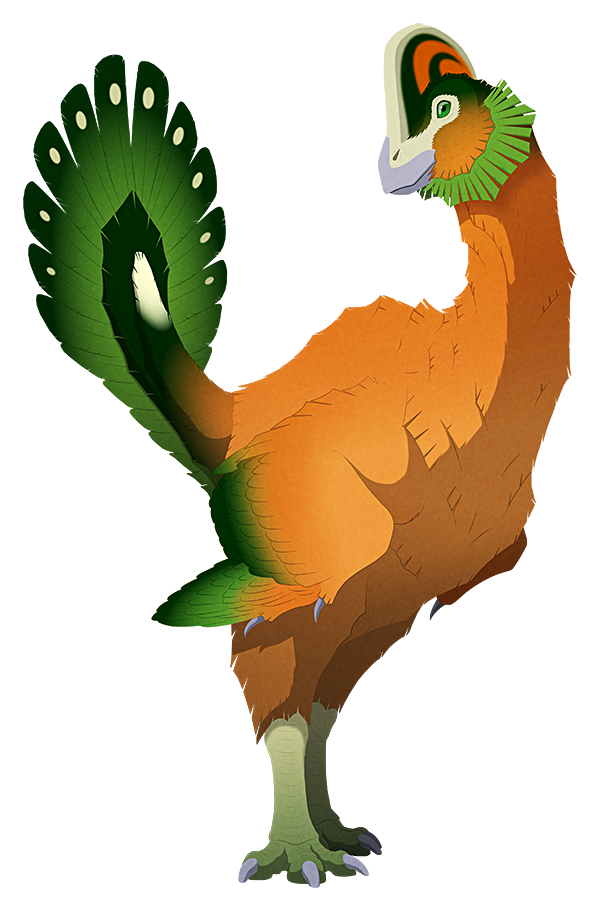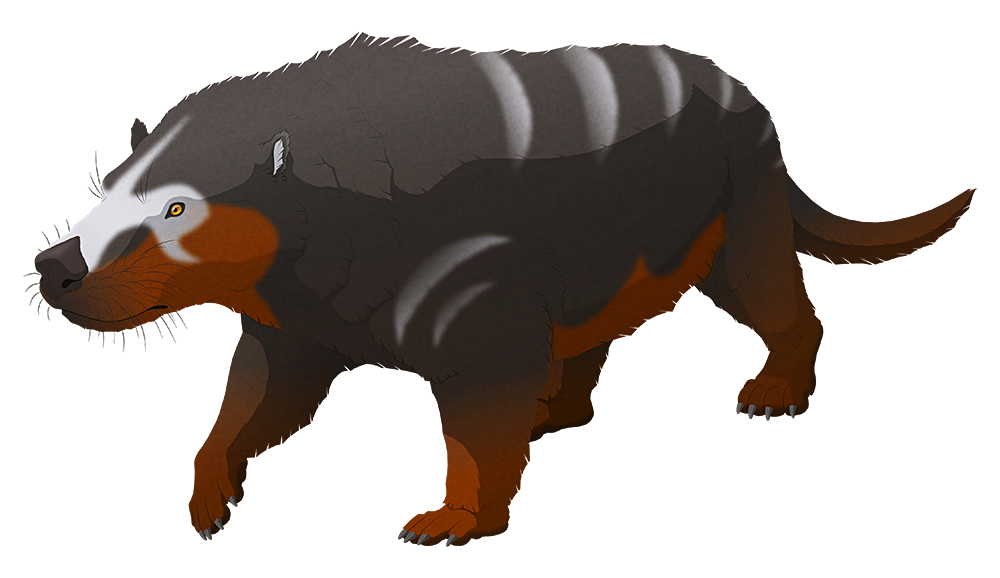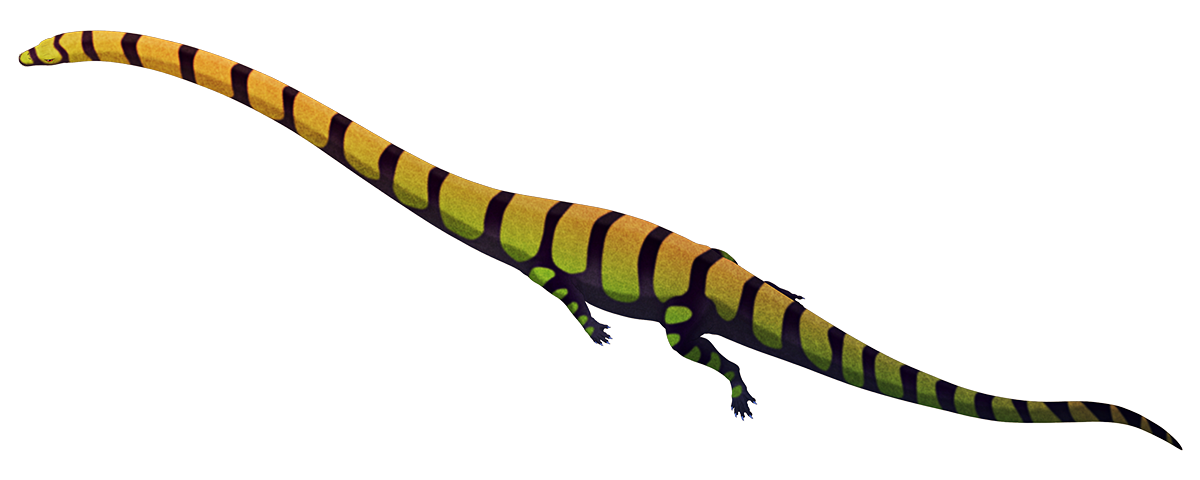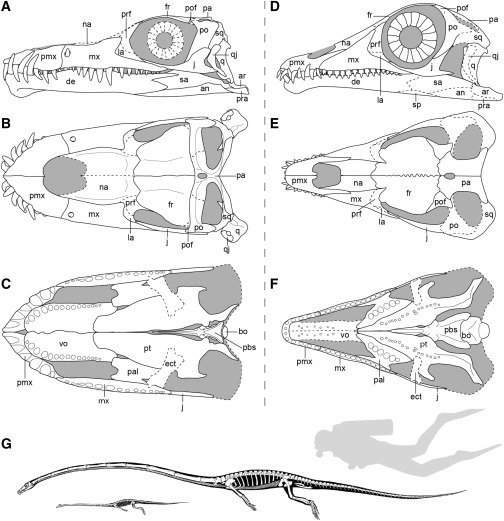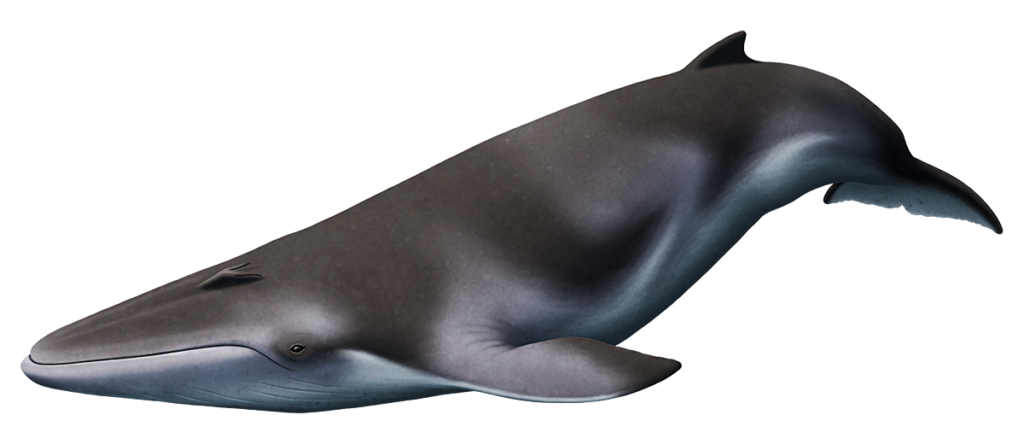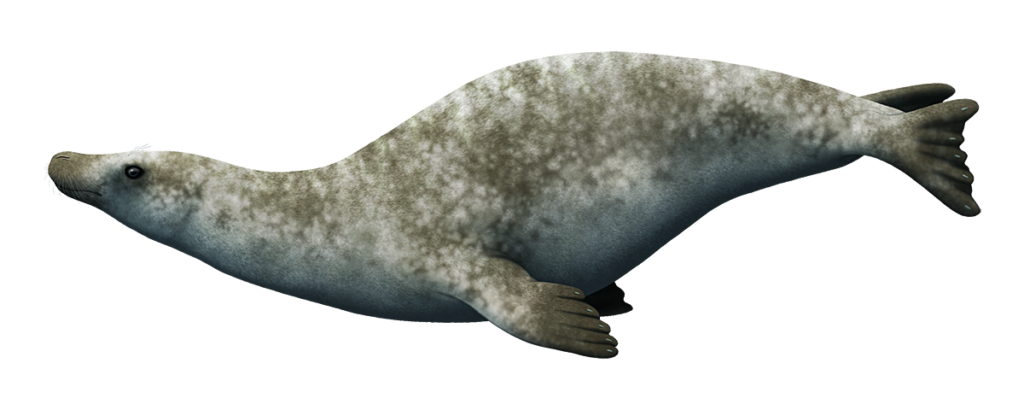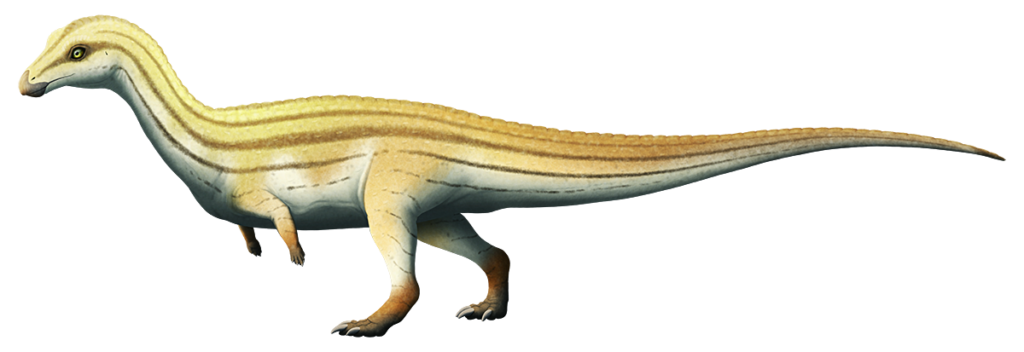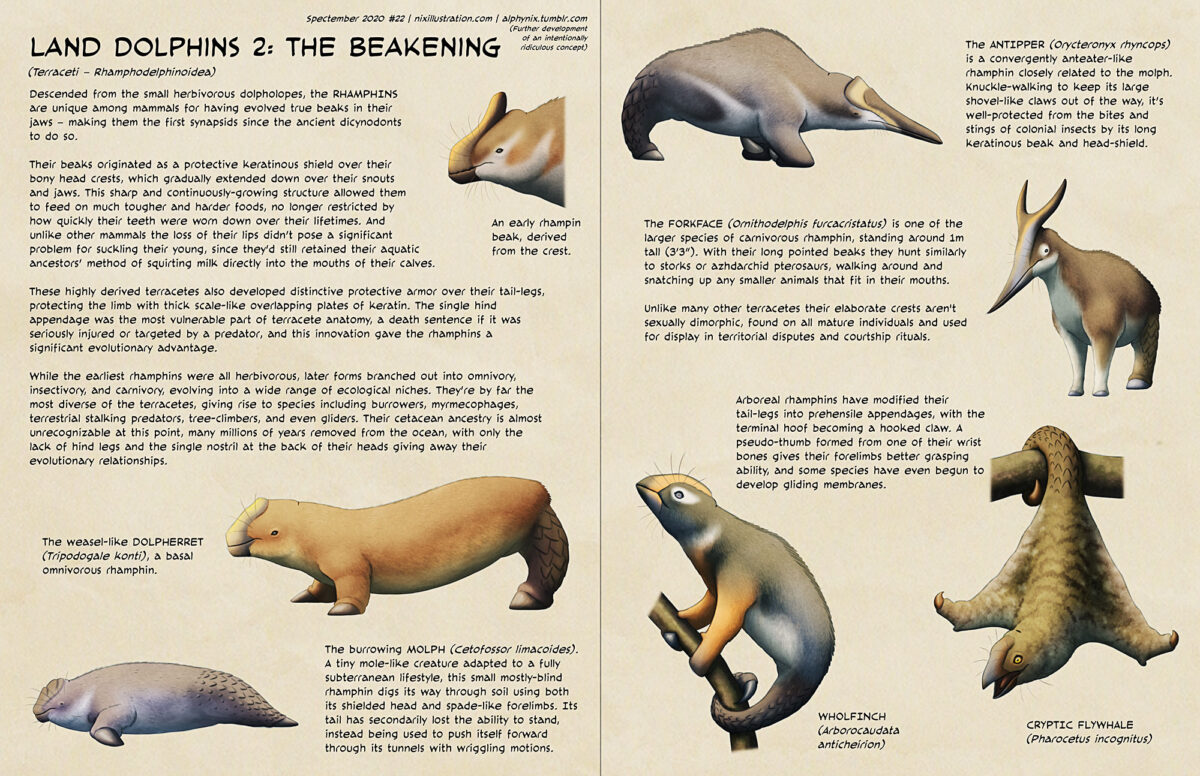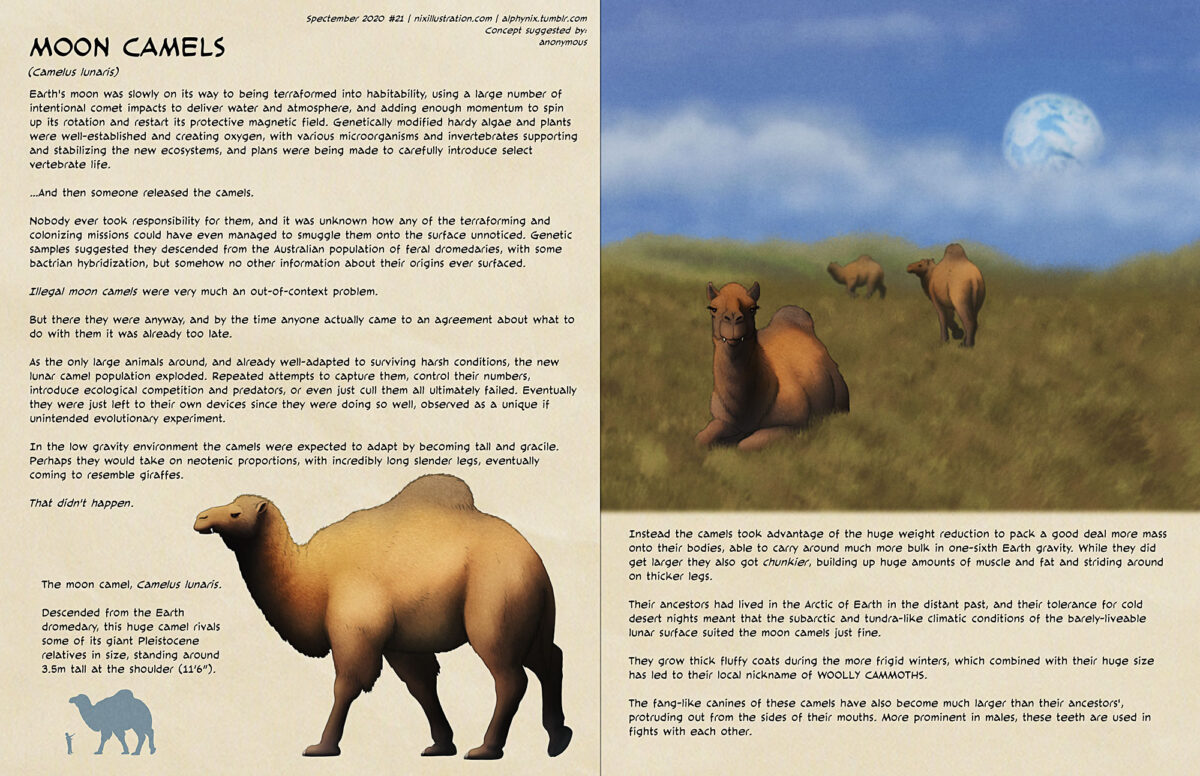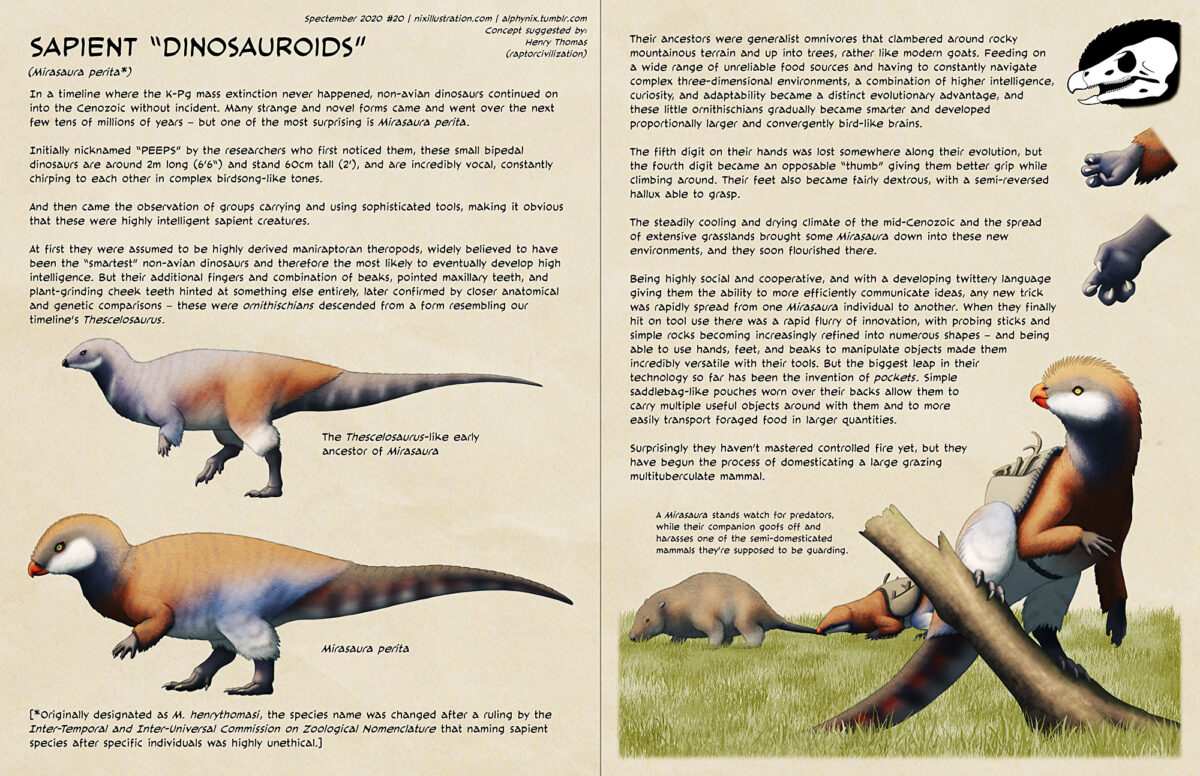Serina is a huge and ambitious speculative worldbuilding project by Dylan Bajda, better known as Sheatherius or Sheather888.
Set on a fictional habitable exomoon, roughly Mars-sized but with enough density to give it about 75% the gravity of Earth, the world of Serina was initially terraformed with a very specific goal in mind. Many species of microorganisms, algae, plants, fungi, and invertebrates set up and stabilized the starting conditions in a mostly-tropical climate, along with a few small live-bearing poeciliid fish in aquatic ecosystems. But on land just one vertebrate species was ever introduced – the domestic canary bird, Serinus canaria domestica.
And, like a massive-scale version of how impoverished island ecosystems often evolve in strange directions in isolation, the initial colonists of this world went to diversify and flourish over the next 300 million years. Ants briefly dominate the early ecosystems and then go on to develop complex symbiotic relationships with bamboo plants, sunflowers become trees, guppies begin to adapt to terrestrial lifestyles, and derived canaries fill a wide range of ecological niches in the air, land, and seas, with some forms even experimenting with mouth-brooding eggs or live-bearing their young.
As time goes on the inhabitants of Serina become increasingly weird and alien compared to their ancestors, shaped by changing climates and devastating mass extinctions. Examples include tentacle-faced birds, highly successful and diverse mammal-like terrestrial tripodal fish, giant manta-ray-like sea snails, and a particularly bizarre lineage of birds with metamorphosing life stages.
With detailed descriptions and numerous lavish illustrations in Sheather’s characteristic art style (all done entirely with a mouse in MS paint and GIMP!), Serina has been in development since early 2015 and is currently still ongoing, with the timeline now in its finale and approaching the end of the moon’s habitable period.
Sheather has also created several other spec projects, including the deliberately fantastical setting of Sheatheria, its successor/reboot Pluvimundus, and the monkey-world Atelemundus (created as a commission for grazatt).
Tomorrow: alien biomechanics!

